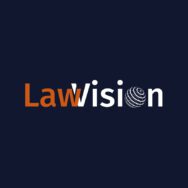This article was first published June 29, 2021 in PinHawk’s Legal Administrator Daily.
There is nothing more rewarding for business leaders than helping a business or a team reach its goals, and to inspire others to succeed. Reaching this milestone relies solely on the people in the organization and on the organization’s leadership. In our work with law firms, conversations often turn to that of leadership. Mentions include leaders with no vision, leaders who micro-manage, or leaders who are downright dysfunctional, and of course great leaders—those who inspire others, set organizational goals, communicate across the organization, and build trust. Leaders in law firms are many. Practice and department heads, office heads, committee chairs, and of course the top leaders, the managing partner(s). How is your firm training its leaders to be strong and supportive?
Harvard’s Ronald Heifetz once wrote, “Being a leader is easy when things are going well.” His book, Leadership Without Easy Answers, is a great read and not just consultant speak. He writes, “Leadership is the process of adaptive work, elevating followers by discussing and aligning value systems to face reality. Leadership is putting the finger on the real challenges that threaten our survival and changing the mindset of the followers.”
In his book, The Practice of Adaptive Leadership, he advises, “When change requires you to challenge people’s familiar reality, it can be difficult, dangerous work. Whatever the context—whether in the private or the public sector—many will feel threatened as you push through major changes. But as a leader, you need to find a way to make it work.”
Taking a look at one’s self in the mirror and being honest about the type of leader you are (compared to the type of leader you aspire to be) is an important part of the journey towards becoming a strong and effective leader. How do you know when you have reached a level of effectiveness? Frankly, the best mirror available for this is a leadership (aka a “360”) assessment. We are certified in and prefer the tools from Human Synergistics, a global leader in organizational effectiveness. The leadership assessments provide a substantive summary of your leadership style that will cause one to dig deep into self-reflection and see one’s self as others experience you. Further, they provide a roadmap that allows a leader to see the behaviors their leadership style drives in others. And the ability to compare an assessment of self in contrast to the current leadership style people are experiencing from you. Of course, there are other great tools for a self-assessment, and it’s important to use one of these tools to identify what to focus on to become a stronger leader.
Any time a leader wants to better themselves, a good practice is to encourage reflection about where they are in their current phase of leadership development and where they want to improve. Work hard at leadership. Read books—Heifetz is one of the best authors about this topic and writes in a thought-provoking manner. Take assessments. Ask for feedback from direct reports and from clients.
Why focus on leadership at all? Most of us become leaders with no or little training in the area of leading and developing people. Few of us have training in human behavior that could help us to navigate the various personalities and behaviors of the people who we manage, and their impact on the organization overall. And last, we often underestimate the level of communicating we do with our firms and our teams. As leaders, we need to communicate, empower, and provide feedback. One of the criticisms of many leaders in law firms is, in fact, lack of communication, lack of clarity about goals, or lack of clarity on advancement metrics. The assessment you choose will show you how well you do in these areas.
Upon reflection of 2020, leaders were provided an excellent opportunity to improve their leadership effectiveness. And they did. Feedback about leaders’ ongoing communication across their firms is that it was well-received. And leaders themselves will say the pandemic helped them become better. To continue on this road of leadership development, know what style of leadership you have and where to focus for future growth.
There are various styles of leadership. Some are encouraging, and others are passive defensive or competitive. Our work with the assessment’s framework allows leaders to closely examine their style and the impact it has on those they lead. Educating one’s self about how one’s own leadership style may impact others’ behaviors is well worth the time and money.
To gain a better understanding of the styles, what follows is a brief overview of each. Think about your style and which behaviors you are seeing with your team members. Chances are some of your leadership characteristics are driving these behaviors—good and bad. Human Synergistics describes the assessment: “The assessment results allow you to compare your own impressions of your leadership strategies to your strategies as described by others.” Here are some brief snippets of all:
The Constructive Styles indicate the extent to which you as a leader motivate and encourage others to…
- Set challenging but realistic goals
- Develop themselves
- Be supportive of people
- Treat people as members of the team
- Respect diverse backgrounds and viewpoints
- Show trust and confidence in their peers and associates
- Actively support others in their career development and growth
- Discuss decisions with those who will be affected by them
The specific styles within Constructive are: Achievement; Self-Actualizing; Humanistic-Encouraging; and Affiliative.
The Passive/Defensive Styles indicate the extent to which you as a leader motivate and require others to…
- Gain the full agreement of those around them
- Conform
- Do only what they are told
- Clear all decisions with superiors
- Please those in positions of authority
- Lead others to feel insecure and uneasy about interpersonal relations within the organization
- Avoid any possibility of being blamed for a mistake
The specific styles within Passive/Defensive are: Approval; Conventional; Dependent; and Avoidance.
The Aggressive/Defensive Styles indicate the extent to which you as a leader motivate and drive others to…
- Point out mistakes
- Act forceful and aggressive
- Operate in a “win-lose” framework
- Set unrealistically high goals
- Play “politics” to gain influence
- Protect your power base, maintain your authority
- Distance yourself from peers who are experiencing problems
- Feel apprehensive, insecure about their position and authority
- Dismiss good ideas by pointing out flaws
- Stay on top of every detail and work long hours to attain narrowly defined objectives
The specific styles are: Oppositional; Power; Competitive; and Perfectionistic.
The research and work in this area of leadership are compelling. The data is extremely powerful and backed by thousands of research data points collected from many leaders across organizations. All to help us to become better leaders.


